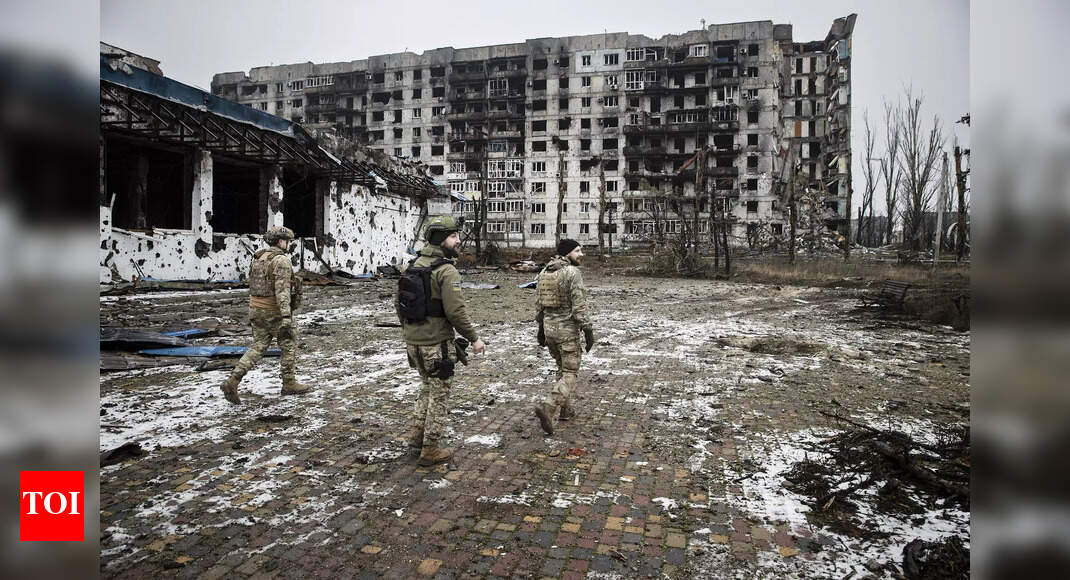Sweden And Finland's Military Integration: A Pan-Nordic Defense Strategy

Table of Contents
Historical Context and Motivations for Increased Military Cooperation
For decades, Sweden and Finland maintained a policy of military non-alignment, a legacy shaped by historical neutrality and a desire to avoid entanglement in great power conflicts. However, Russia's 2022 invasion of Ukraine fundamentally altered the security calculus in Northern Europe. This aggressive act shattered the previously held assumptions about regional stability and highlighted the vulnerability of even neutral nations.
- Increased Russian aggression as a primary driver: The invasion served as a stark wake-up call, demonstrating Russia's willingness to use military force to achieve its geopolitical objectives. This prompted both Sweden and Finland to reassess their security postures.
- NATO membership as a catalyst for closer defense ties: Joining NATO provided a strong security guarantee, but also necessitated closer military cooperation with fellow alliance members, particularly neighboring countries like Sweden and Finland. This integration is vital for collective defense and mutual support.
- Shared security concerns within the Baltic Sea region: Both countries share significant maritime borders and face similar security challenges in the Baltic Sea region, including potential Russian naval activity and airspace incursions. This shared vulnerability fosters a strong impetus for coordinated defense measures.
- Desire for enhanced deterrence capabilities: By integrating their military forces, Sweden and Finland aim to create a more robust and credible deterrent against potential aggression, making any attack less likely. This enhanced deterrence rests on both combined military power and the broader security umbrella of NATO.
Key Aspects of Sweden and Finland's Military Integration
The increased military cooperation between Sweden and Finland manifests in several key areas:
Joint Exercises and Training
The frequency and scale of joint military exercises between the two nations have increased dramatically since their NATO applications. These exercises are designed to enhance interoperability, improve coordination, and foster a shared understanding of tactics and procedures.
- Examples of specific joint exercises: Exercises like "Aurora" – a large-scale Nordic defense exercise – involve the combined forces of both countries, alongside other Nordic and NATO partners. These exercises feature combined air, land and naval operations.
- Types of military assets involved: These joint exercises involve a wide array of military assets, including fighter jets from the air forces, naval vessels from both navies, and ground troops from both armies.
- Improvements in interoperability: The exercises specifically target the improvement of interoperability, ensuring seamless communication and coordinated action between the two forces, a crucial element for effective collective defense.
Information Sharing and Intelligence Cooperation
Effective intelligence sharing and collaborative threat assessments are crucial components of the integration process. Both countries are working to establish robust mechanisms for the exchange of sensitive information.
- Examples of intelligence-sharing agreements: While specific details remain classified for national security reasons, the establishment of formalized agreements for intelligence sharing is underway, building upon existing frameworks.
- Benefits of combined intelligence analysis: Pooling intelligence resources allows for more comprehensive threat assessments, leading to better-informed decision-making and more effective response strategies.
- Potential challenges related to data security and national sovereignty: Safeguarding sensitive information and balancing the need for cooperation with national sovereignty concerns are important challenges that require careful attention and robust security protocols.
Combined Defense Planning and Resource Pooling
Sweden and Finland are increasingly coordinating their defense planning, with a focus on avoiding redundancy and maximizing the effectiveness of their resources.
- Examples of joint procurement initiatives: Exploring joint procurement of major defense systems, such as weapons platforms or intelligence systems, can lead to cost savings and operational efficiencies.
- Benefits of economies of scale and reduced redundancy: Combined procurement and resource sharing can generate significant economies of scale, reducing overall defense expenditure while strengthening capabilities.
- Potential challenges related to differing defense doctrines and procurement processes: Harmonizing defense doctrines and procurement processes can be complex, requiring careful negotiations and compromises to ensure the most efficient and effective use of shared resources.
The Broader Pan-Nordic Defense Context
The enhanced military cooperation between Sweden and Finland significantly strengthens the overall Pan-Nordic defense strategy, building upon existing cooperation frameworks like NORDEFCO (Nordic Defence Cooperation).
- Enhanced regional security through collective defense: The combined military strength of the Nordic countries, now including Sweden and Finland within the NATO framework, creates a more robust and credible deterrent to external threats.
- Increased resilience against external threats: A coordinated approach to defense bolsters resilience to various threats, including cyberattacks, hybrid warfare, and conventional military aggression.
- Improved crisis management capabilities: Enhanced cooperation allows for better crisis management and response capabilities, ensuring efficient coordination in the face of any emergency.
- Strengthened diplomatic influence: A unified Nordic defense posture strengthens the region's diplomatic influence and provides a stronger voice in international forums.
Challenges and Future Prospects for Sweden and Finland's Military Integration
Despite the significant progress, challenges remain in further integrating the military forces of Sweden and Finland.
- Differing defense budgets and priorities: Balancing differing national defense budgets and priorities requires careful negotiation and a shared understanding of strategic objectives.
- Potential bureaucratic hurdles and differing national defense structures: Harmonizing national defense structures and procedures may encounter bureaucratic hurdles that need to be addressed efficiently.
- Balancing national interests with regional cooperation: Maintaining a balance between national interests and regional cooperation is essential for the long-term success of the integration process.
The long-term vision for Sweden and Finland's military cooperation points towards deeper integration within NATO structures and a growing role in the collective defense of the region.
- Predictions for future joint military projects: Future joint projects will likely focus on areas such as joint air defense, cyber security, and enhanced intelligence sharing.
- Potential for further integration within NATO structures: Further integration within the NATO command structure is highly likely, enhancing interoperability and reinforcing collective defense.
- The ongoing relevance of the Sweden and Finland military integration in the face of evolving geopolitical dynamics: The relevance of this integration will only grow in the face of evolving geopolitical dynamics, ensuring a strong and unified defense posture for the Nordic region.
Conclusion
The increased military integration between Sweden and Finland represents a significant development in European security. Driven by shared security concerns and amplified by NATO membership, this cooperation strengthens not only bilateral defense capabilities but also contributes significantly to a robust Pan-Nordic defense strategy. While challenges remain, the prospects for deeper integration appear strong, promising enhanced regional security and stability in the face of evolving global threats. For further insights into this evolving partnership, continue to follow developments regarding Sweden and Finland military integration and its impact on regional security. Understanding the nuances of Sweden and Finland military cooperation is crucial for comprehending the evolving security landscape of Northern Europe.

Featured Posts
-
 Why Investors Shouldnt Fear High Stock Market Valuations Bof As Perspective
Apr 22, 2025
Why Investors Shouldnt Fear High Stock Market Valuations Bof As Perspective
Apr 22, 2025 -
 Fighting In Ukraine Resumes After Putins Easter Truce Expires
Apr 22, 2025
Fighting In Ukraine Resumes After Putins Easter Truce Expires
Apr 22, 2025 -
 Chronology Of The Karen Read Murder Case From Arrest To Verdict
Apr 22, 2025
Chronology Of The Karen Read Murder Case From Arrest To Verdict
Apr 22, 2025 -
 Googles Dominance Under Threat The Case For A Breakup
Apr 22, 2025
Googles Dominance Under Threat The Case For A Breakup
Apr 22, 2025 -
 Navigating Trump Tariffs The Tik Tok Factor
Apr 22, 2025
Navigating Trump Tariffs The Tik Tok Factor
Apr 22, 2025
